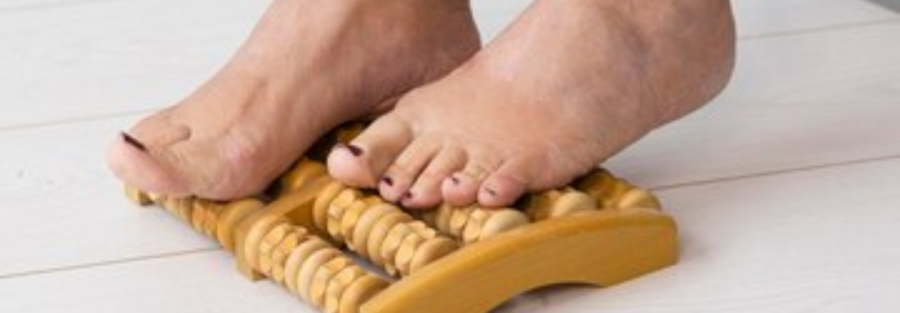Living with diabetes poses several challenges, with diabetic foot being one of the most serious. This article will guide you through the symptoms, causes, and preventive measures for diabetic foot, helping you stay ahead in managing this condition.
Identifying Diabetic Foot Symptoms
Early Indicators
Catching diabetic foot symptoms early can significantly reduce the risk of severe complications. Look out for these warning signs:
- Numbness: A noticeable reduction in sensation in your feet.
- Tingling or burning sensation: Unusual sensations that feel like pins and needles or a burning feeling.
- Swelling: Persistent puffiness or inflammation in the feet.
- Pain: Unexplained aches or discomfort, especially when walking or standing.
Also Read: The Punjabi Diet and Diabetes: A Balancing Act
Advanced Symptoms
Without proper diabetic foot care, symptoms can worsen, leading to:
- Ulcers: Open sores or wounds.
- Infections: Redness, warmth, and pus.
- Skin discoloration: Dark or blue areas on the feet.
- Gangrene: Dead tissue, often black and foul-smelling.
Recognizing these symptoms early and seeking medical help can prevent serious outcomes.
Understanding the Causes of Diabetic Foot
Poor Blood Circulation
Diabetes can lead to poor blood circulation, particularly in the extremities. Reduced blood flow to the feet can cause tissue damage and slow healing processes.
Nerve Damage
Diabetic neuropathy is a common complication of diabetes. High blood sugar levels can damage nerves, especially in the feet, causing loss of sensation and increasing the risk of injuries and infections.
High Blood Sugar Levels
Consistently high blood sugar levels can weaken the immune system, making it harder for the body to fight off infections. This can lead to more severe foot problems.
Foot Deformities
Diabetes can cause changes in the shape of the feet and toes, such as hammertoes or bunions. These deformities can create pressure points and lead to ulcers and other issues.
Prevention Diabetic Foot Problems
Regular Foot Examinations
Regular check-ups with a healthcare provider are crucial. They can detect early signs of diabetic foot and recommend appropriate diabetic foot care.
Proper Foot Hygiene
Keep your feet clean and dry by washing them daily with mild soap and warm water. After washing, dry them thoroughly, especially between the toes, to prevent fungal infections. Moisturize your feet to avoid dry, cracked skin, but be cautious not to apply lotion between the toes.
Wearing Appropriate Footwear
Choose shoes that fit well and provide adequate support. Avoid tight or high-heeled shoes that can create pressure points. Orthotic inserts can help distribute pressure evenly across your feet, reducing the risk of ulcers.
Blood Sugar Management
Keeping your blood sugar levels in check is crucial. Regular monitoring, a balanced diet, and medication adherence can help maintain stable blood sugar levels, reducing the risk of diabetic foot complications.
Quitting Smoking
Smoking impairs blood circulation, particularly in the extremities, increasing the risk of diabetic foot problems. Quitting smoking can significantly improve your overall health and reduce complications.
Daily Foot Inspections
Make it a habit to inspect your feet daily for any cuts, blisters, or changes in skin color. Use a mirror to check the bottoms of your feet if needed.
Common Complications of Diabetic Foot
Infections
One of the most serious complications of diabetic foot is infection. Because high blood sugar levels can weaken the immune system, even minor cuts or blisters can quickly become infected. These infections can spread to the bones and tissues, leading to severe health issues and potentially necessitating amputation.
Ulcers
Foot ulcers are another common issue in diabetic patients. These are open sores that develop due to poor circulation and nerve damage. Ulcers can become infected if not properly treated, leading to more serious complications. Regular monitoring and prompt treatment are crucial in managing foot ulcers.
Charcot Foot
A condition where the bones in the foot become fragile and prone to fractures. Over time, this can lead to foot deformities, which further increase the risk of ulcers and infections.
Treatment Options for Diabetic Foot
Wound Care
Proper wound care is essential in treating diabetic foot ulcers and preventing infections. This includes cleaning the wound, applying appropriate dressings, and possibly using antibiotics if an infection is present. In some cases, specialized treatments like hyperbaric oxygen therapy may be used to promote healing.
Medications
Medications can play a significant role in managing diabetic foot problems. Antibiotics are commonly used to treat infections, while other medications may be prescribed to manage pain or improve blood flow.
Surgical Intervention
In severe cases, surgery may be necessary to address diabetic foot complications. Surgical procedures might include removing dead tissue, correcting deformities, or improving blood circulation to the feet.
Custom Orthotics
Custom-made orthotics can help relieve pressure on the feet, reduce pain, and prevent the formation of ulcers. These devices are tailored to fit your feet and provide the support and cushioning needed to protect against injuries.
Living with Diabetic Foot
Adopting a Healthy Lifestyle
Adopting a healthy lifestyle is essential for managing diabetes and preventing diabetic foot complications.
Monitoring Blood Sugar Levels
Consistent monitoring of blood sugar levels can help prevent complications related to diabetic foot. Using a glucometer regularly and keeping a log of blood sugar readings can provide valuable information for healthcare providers to adjust treatment plans.
Staying Active
Consistent monitoring of blood sugar levels can help you avoid complications related to diabetic foot. Use a glucometer to check your levels regularly and keep a log to share with your healthcare provider.
Conclusion
Understanding the symptoms, causes, and prevention of diabetic foot is essential for anyone with diabetes. Proper diabetic foot care, including regular check-ups, good hygiene, and appropriate footwear, can prevent severe complications. Dr. Arpit Garg offers the best services in diabetic foot care, ensuring patients receive comprehensive and effective treatment. Maintaining good blood sugar control and avoiding smoking are also critical steps in preventing diabetic foot problems. With the right care and attention, those with diabetes can lead healthy, active lives without the fear of serious foot complications.



